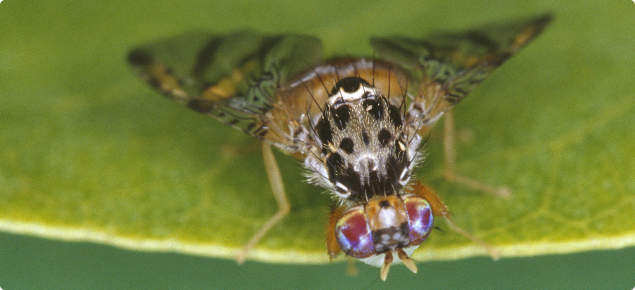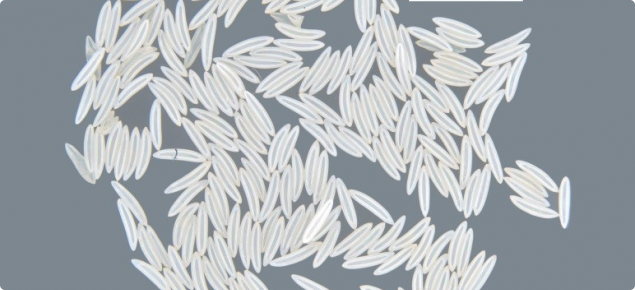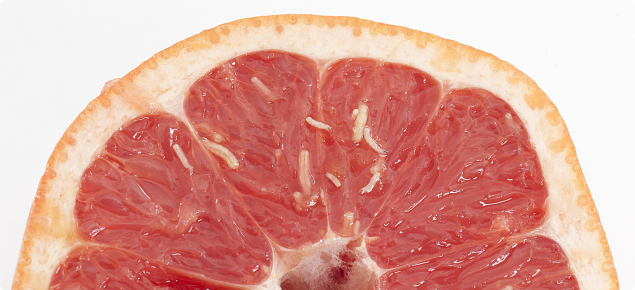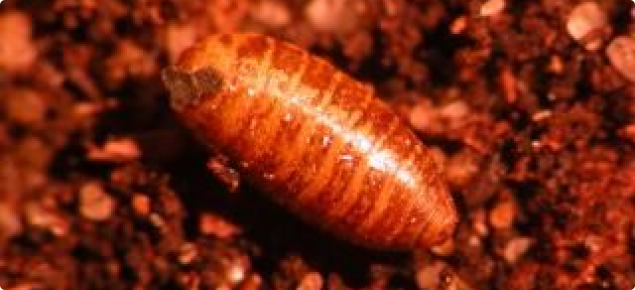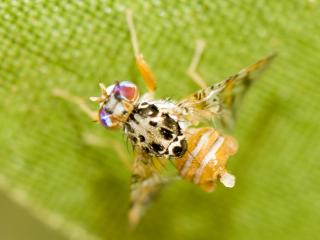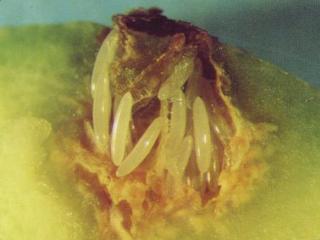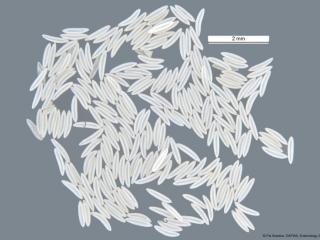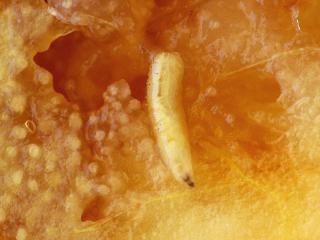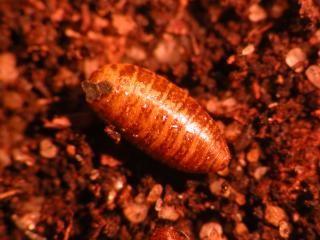Distribution
Medfly is thought to originate in Africa and is now endemic to WA. It was discovered in Claremont in 1895 and is found from Esperance through to Carnarvon. It is present in Broome and Derby, but absent from the Ord River Irrigation Area (ORIA, Kununurra). The main area of infestation extends from Perth through to Bunbury.
Behaviour
Medfly activity is dependent on temperature. One life cycle takes 28-34 days to complete in summer and 60-115 days in winter. Fly activity and numbers are greatest during warmer months. Adult Medflies become active when temperatures exceed 12°C. As the temperature rises in spring, increased numbers of adults emerge from the ground and flies become active. If control is not started at this time, Medfly populations will grow and cause problems later in the season.
When temperatures start to fall Medfly can still survive for extended periods as eggs or larvae in fruit, or as pupae in the ground.
Adult Medfly may live for two to three months and are often found in the foliage of fruit trees, especially citrus. As long as fruit is present, most Medfly will not move more than 50 metres. The males form groups underneath leaves and call for females to mate.
After mating, females search for a suitable ripe fruit. Suitable ripe fruits include, but are not limited to, mangos, citrus, grapes and stone fruit. When Medfly numbers are high and competitions is great, or if less favoured fruits are available, females may infest unripe fruits or less preferred fruits such as olives and capsicums. Female Medfly also infest less preferred hosts if preferred hosts are not available, even when populations are low.
Once a suitable host is found, the female’s ovipositor (egg laying organ) is used to make a hole (sting) in the fruit skin and deposits up to 300 eggs. Eggs laid in unripe fruit may hatch as the fruit ripens.
Identification
Adult
The adult fly is 3-5mm long, slightly smaller than a housefly. The body is light brown. The wings are mottled with distinct brown bands extending to the wing tips. The abdomen is brown, encircled by two light-coloured rings. The thorax (middle) has irregular patches of black and silver, giving it a mosaic appearance.
The female Medfly has an ovipositor or egg-laying organ but the male does not. The males form groups underneath leaves on the same tree or adjacent trees (called a lek) and call for females.
Eggs
Medflies prefer to lay eggs in soft-fleshed fruit such as apricots, peaches, plums and nectarines. When Medfly numbers are high and competition is greater, females become less choosy and will infest less preferred hosts such as olives.
Once a suitable host is found, the ovipositor is used to pierce the fruit skin. Batches of up to 300 translucent white banana-shaped eggs are laid into this hole. Eggs are barely visible to the naked eye and take 2–4 days to hatch in summer and 19–20 days in winter.
The eggs and larvae of Qfly and Medfly are almost identical, and larval identification needs to be carried out by an expert.
Larvae (maggots)
The eggs hatch into larvae in two to four days. The larvae are white with a flat, pointed head. This stage of the life cycle is the most easily visible.
There are three larval stages (instars) with first instars 1mm long, quickly reaching 8mm as third instars. The larvae feed on the fruit causing it to decompose. When fully grown (third instar), larvae stop feeding and leave the fruit, burrowing into the soil to pupate.
The larval stage takes about 14–16 days in summer and 25–45 days in winter.
Pupae
Pupae resemble a small brown capsule about 4mm long. Within the pupa the Medfly slowly develops into an adult. The adult fly cuts through the pupal case and burrows up through the soil. The pupal stage lasts 12–14 days in summer and 25–50 days in winter.


